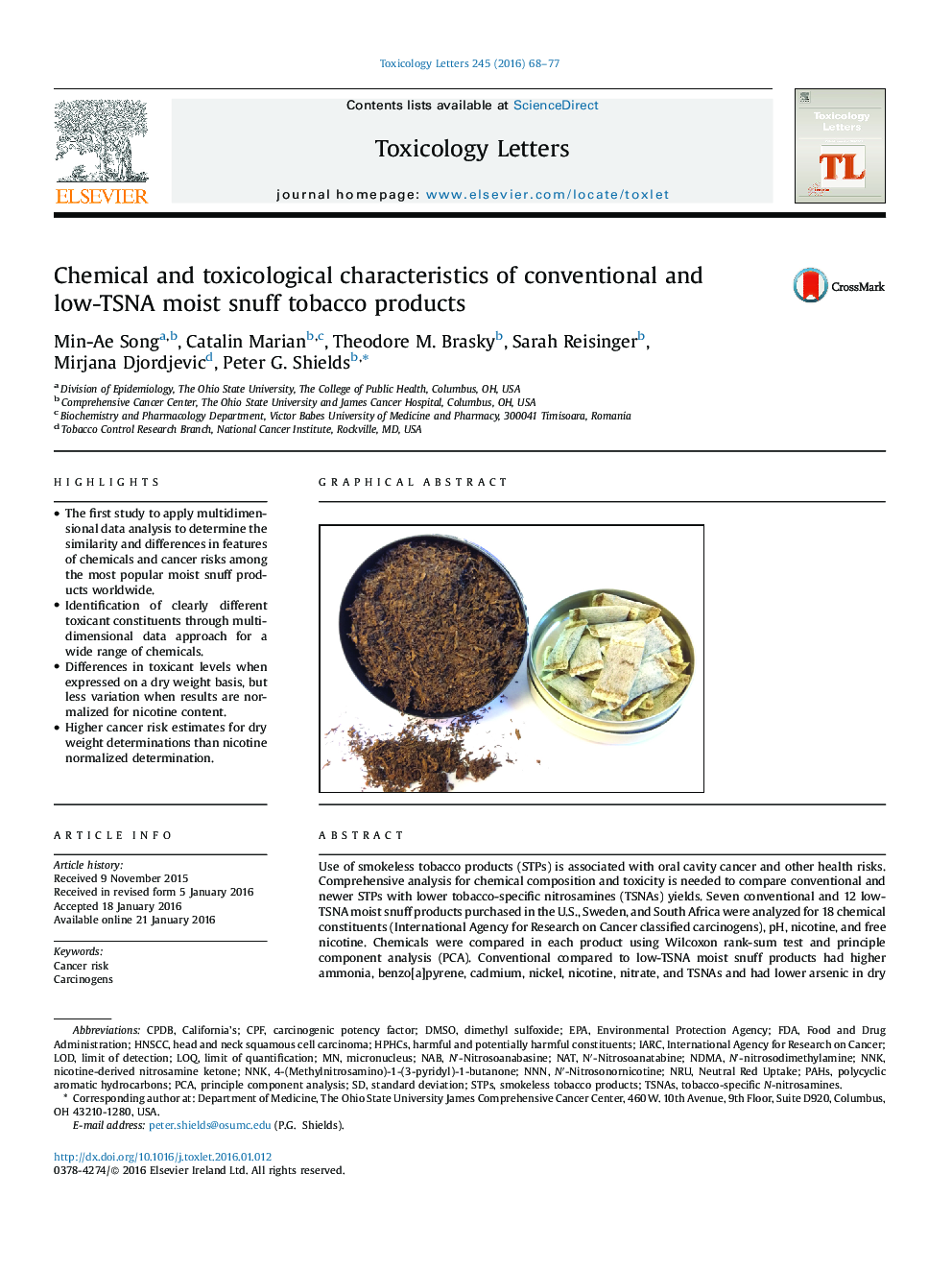| کد مقاله | کد نشریه | سال انتشار | مقاله انگلیسی | نسخه تمام متن |
|---|---|---|---|---|
| 2598516 | 1562627 | 2016 | 10 صفحه PDF | دانلود رایگان |

• The first study to apply multidimensional data analysis to determine the similarity and differences in features of chemicals and cancer risks among the most popular moist snuff products worldwide.
• Identification of clearly different toxicant constituents through multidimensional data approach for a wide range of chemicals.
• Differences in toxicant levels when expressed on a dry weight basis, but less variation when results are normalized for nicotine content.
• Higher cancer risk estimates for dry weight determinations than nicotine normalized determination.
Use of smokeless tobacco products (STPs) is associated with oral cavity cancer and other health risks. Comprehensive analysis for chemical composition and toxicity is needed to compare conventional and newer STPs with lower tobacco-specific nitrosamines (TSNAs) yields. Seven conventional and 12 low-TSNA moist snuff products purchased in the U.S., Sweden, and South Africa were analyzed for 18 chemical constituents (International Agency for Research on Cancer classified carcinogens), pH, nicotine, and free nicotine. Chemicals were compared in each product using Wilcoxon rank-sum test and principle component analysis (PCA). Conventional compared to low-TSNA moist snuff products had higher ammonia, benzo[a]pyrene, cadmium, nickel, nicotine, nitrate, and TSNAs and had lower arsenic in dry weight content and per mg nicotine. Lead and chromium were significantly higher in low-TSNA moist snuff products. PCA showed a clear difference for constituents between conventional and low-TSNA moist snuff products. Differences among products were reduced when considered on a per mg nicotine basis. As one way to contextualize differences in constituent levels, probabilistic lifetime cancer risk was estimated for chemicals included in The University of California’s carcinogenic potency database (CPDB). Estimated probabilistic cancer risks were 3.77-fold or 3-fold higher in conventional compared to low-TSNA moist snuff products under dry weight or under per mg nicotine content, respectively. In vitro testing for the STPs indicated low level toxicity and no substantial differences. The comprehensive chemical characterization of both conventional and low-TSNA moist snuff products from this study provides a broader assessment of understanding differences in carcinogenic potential of the products. In addition, the high levels and probabilistic cancer risk estimates for certain chemical constituents of smokeless tobacco products will further inform regulatory decision makers and aid them in their efforts to reduce carcinogen exposure in smokeless tobacco products.
Figure optionsDownload as PowerPoint slide
Journal: Toxicology Letters - Volume 245, 14 March 2016, Pages 68–77